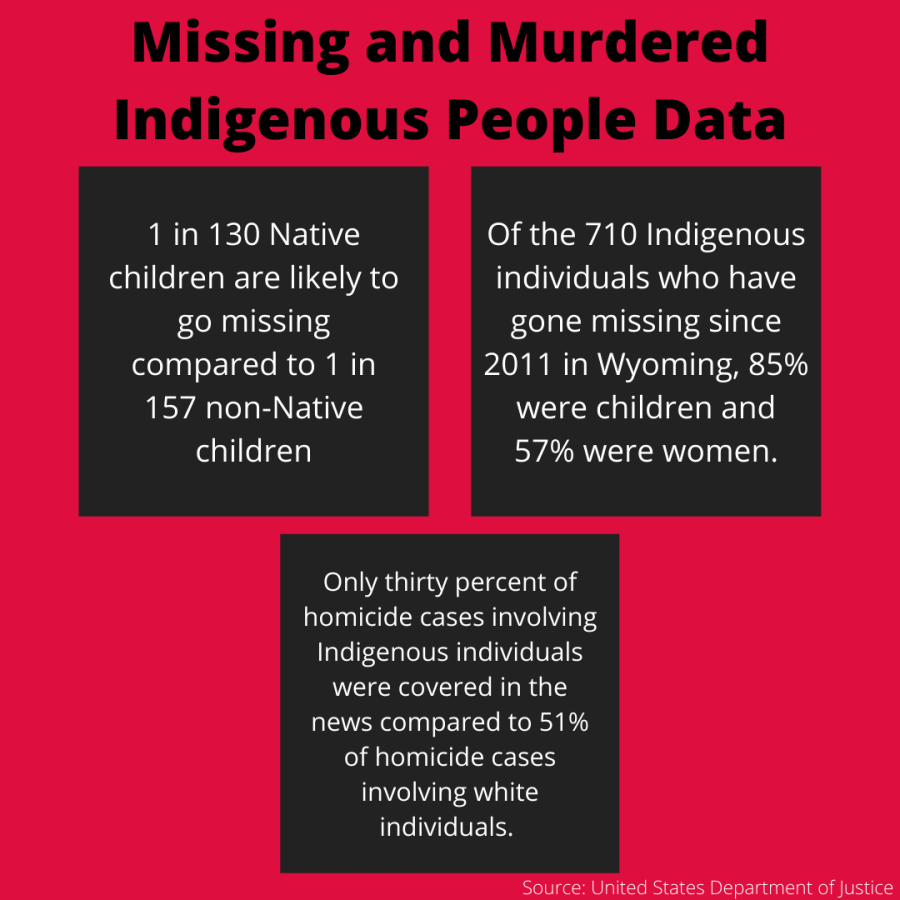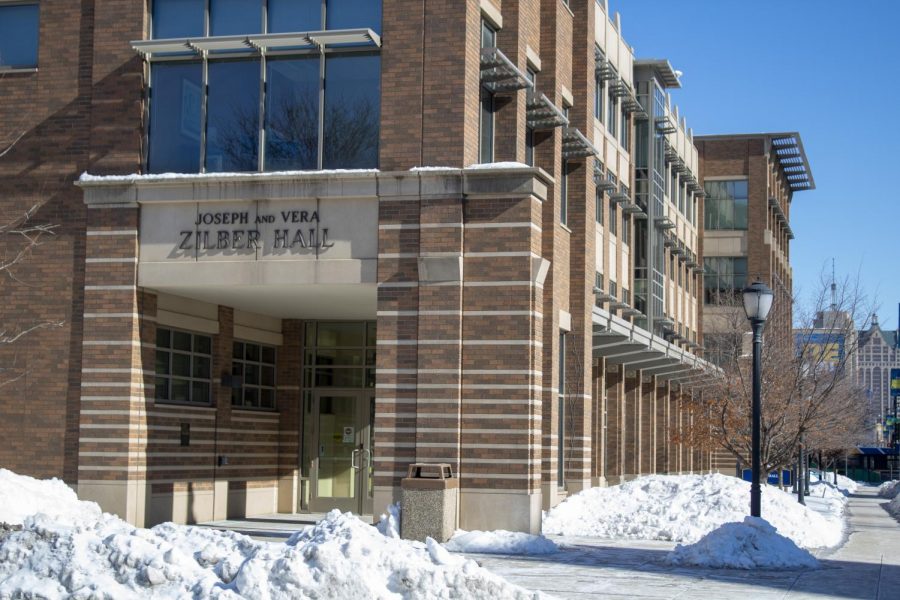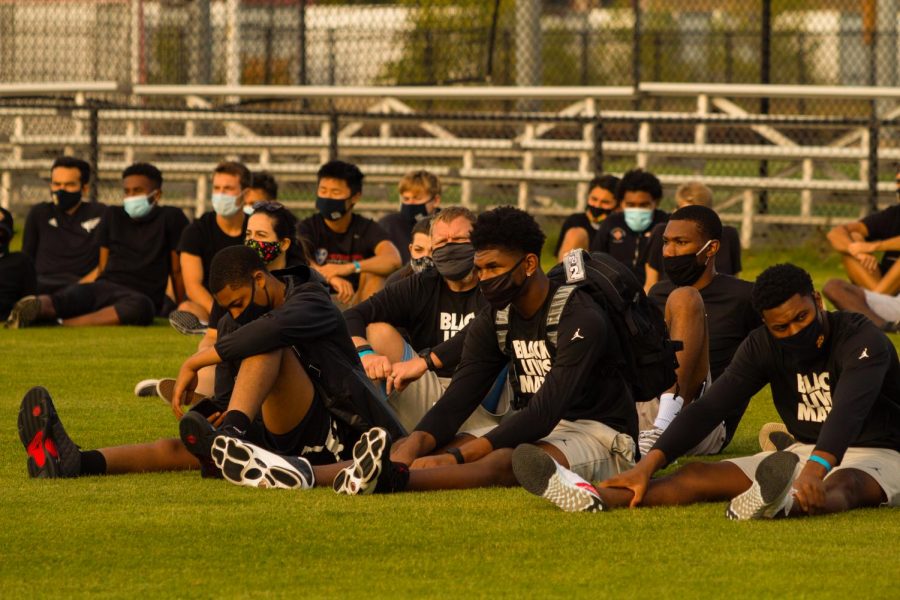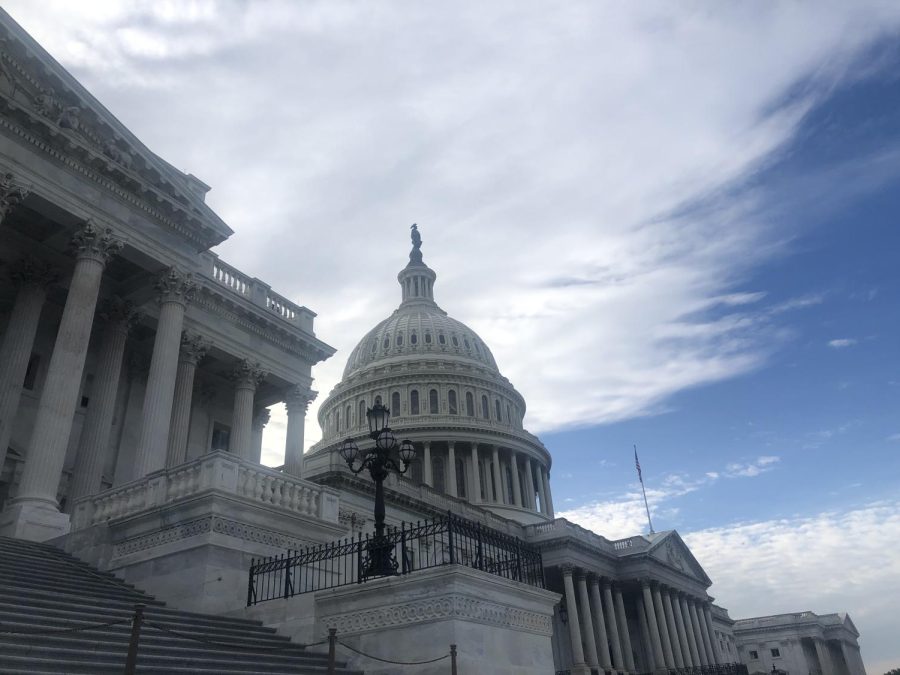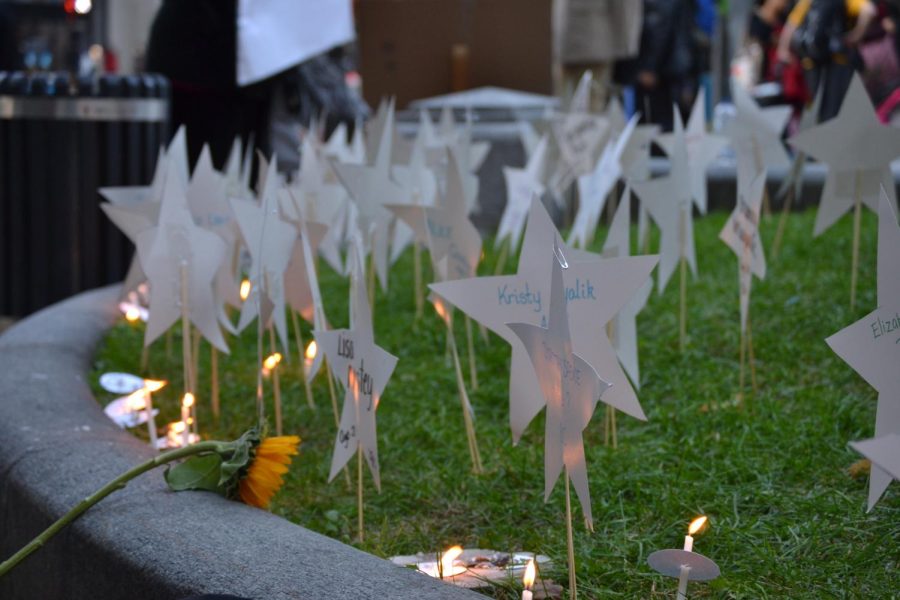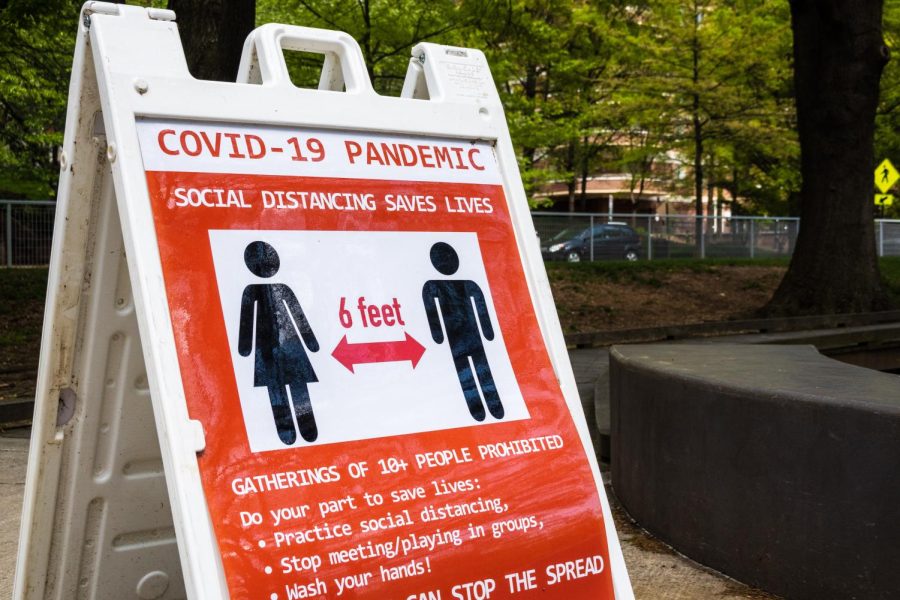Although all missing persons cases should be taken seriously, in the United States, missing person cases surrounding people of color are less likely to be solved than missing persons cases involving white people.
Many people of color who are reported missing are labeled as “runaways” and therefore receive no Amber Alert or immediate action from investigators.
Often times members of the mass media, investigators and the general public are guilty of treating certain missing person cases with more urgency than others. For example, in the recent Gabby Petito case, where a young woman went missing while traveling with her boyfriend in early September, there has been a media frenzy. The country seems to be constantly checking social media and watching news networks for updated stories on her disappearance. Indigenous people and people of color deserve the same attention when they are reported missing.
Petito’s body was found in northern Wyoming on the border of Grand Teton National Park Sept. 22. Although Petito’s case is widely known and covered, the hundreds of Indigenous people who disappear in a similar area are brushed aside.
The phrase “missing murdered Indigenous women” refers to the human rights crisis of the disproportionate number of missing or murdered Indigenous women in Canada and the United States. Since 2011, there have been over 710 Indigenous individuals who have gone missing in Wyoming; 85% of them are children and 57% women. According to the Department of Justice, 1 in 130 Native children are likely to go missing each year compared to the 1 in 157 non-Native children.
There are major discrepancies in the odds of recovery for Indigenous peoples versus white people who went missing in Wyoming, as well. A report in Wyoming published in January 2021 by the state’s Missing and Murdered Indigenous People Task Force found that 50% of missing Indigenous people are found within one week and following that 21% remain missing for 30 days or longer. In contrast, only 11% of white people missing are not found in that time frame.
There is a clear lack of police resources set toward finding missing Indigenous and people of color in general. We as a country have always seen instances of blatant police brutality and bias, such as in the murder of George Floyd in May 2020. However, we can’t be passive in the face of institutionalized racism and bias present in the lack of police investigation into missing persons of color cases.
It is an injustice that Indigenous people and people of color are treated with less priority than their missing white counterparts. Investigators putting less effort into finding these Indigenous people and people of color is not the only issue media outlets should be held accountable for their lack of coverage as well.
Wyoming’s report conducted by the Missing and Murdered Indigenous People Task Force found only 30% of Indigenous homicide victims were featured on the news compared to 51% of white victims. Missing Indigenous people deserve the same amount of coverage as their white counterparts. Their lives are just as valuable. They deserve the same amount of dedicated coverage and resources.
“Missing White Woman Syndrome,” a term that refers to the tendency for people to pay more attention to cases of missing white women rather than missing people of color, is a real phenomenon in the United States. Petito’s case is a prime example of this because the whole world watched as a white woman went missing but so many shut their eyes to the people of color who vanish everyday.
A statement made by New York Times journalist Charles Blow references this term well: “It is not that these white women should matter less, but rather that all missing people should matter equally. Race should not determine how newsroom leaders assign coverage, especially because those decisions often lead to disproportionate allocation of government resources, as investigators try to solve the highest-profile cases.”
Journalists are called to consider what our audience and community would find important; giving less coverage to missing people of color communicates the idea that they are not as important or worth being cared about. This notion should be rejected because people of color, their lives, and stories matter immensely. Journalists and media outlets should strive to give people of color significantly more coverage.
Recently, two black men went missing with very disproportionate attention given to their cases versus Petito’s. Jelani Day is an Illinois State University graduate student who was reported missing to the Bloomington Police Department by his family and a school faculty member Aug. 25. Officials discovered an unidentified body off the South Bank of the Illinois River Sept. 4. Since then, the Bloomington Police Department has said it’s “actively investigating the case.” Investigator collected DNA samples from members of the Day family on Sept. 6 but then told Cameron Bolden Day, Day’s mother, that the police lab does not have the chemical needed to process the samples. This is not satisfactory for Day’s family and it shouldn’t be for anybody else.
Day has recently spoken out saying that she wishes people would care more about her missing son, “he is not a nobody, he is somebody-and I want him to come back home.”
24-year-old Daniel Robinson also went missing in Buckeye, Arizona June 23. Robinson was reported missing a day later and his father, David Robinson II, has been looking for him desperately ever since and even publicly alleged that he is making more of an effort to find his son than investigators working on his case.
Another area where we see a lack of information on missing persons cases is within the Hispanic community. Oftentimes, Hispanic missing persons cases are combined with white missing persons cases and there is a lack of transparency in the actual data. In 2020, 543,018 people were reported missing and 59% of these individuals were described as “white includes Hispanic.” In order to have a better grasp of how many Hispanic missing persons there are in the U.S., investigators and government officials must strive for more clarity in reporting.
There shouldn’t be discrepancy in the efforts to find missing people; everyone should care deeply and those responsible for finding these individuals should utilize the same resources and labor to find each of them regardless of their race, gender, sexuality or background.
When people of color go missing and are not given the same investigation efforts as their white counterparts, we are seeing another example of institutionalized racism in police departments. As a country, we cannot stay silent for the disappearance of some while we scream for the disappearance of others.
This story was written by Grace Cady. She can be reached at [email protected]


